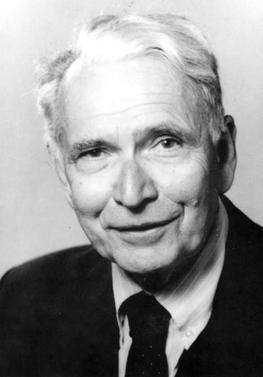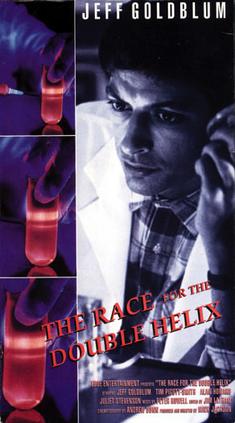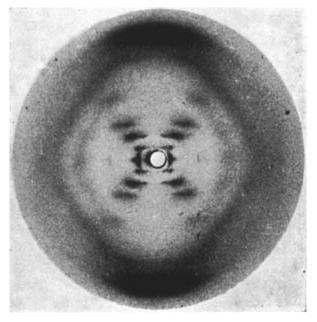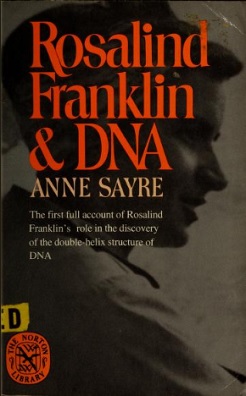
Francis Harry Compton Crick was an English molecular biologist, biophysicist, and neuroscientist. He, James Watson, Rosalind Franklin, and Maurice Wilkins played crucial roles in deciphering the helical structure of the DNA molecule.

James Dewey Watson is an American molecular biologist, geneticist, and zoologist. In 1953, he co-authored with Francis Crick the academic paper proposing the double helix structure of the DNA molecule. Watson, Crick and Maurice Wilkins were awarded the 1962 Nobel Prize in Physiology or Medicine "for their discoveries concerning the molecular structure of nucleic acids and its significance for information transfer in living material".

Rosalind Elsie Franklin was a British chemist and X-ray crystallographer whose work was central to the understanding of the molecular structures of DNA, RNA, viruses, coal, and graphite. Although her works on coal and viruses were appreciated in her lifetime, Franklin's contributions to the discovery of the structure of DNA were largely unrecognized during her life, for which Franklin has been variously referred to as the "wronged heroine", the "dark lady of DNA", the "forgotten heroine", a "feminist icon", and the "Sylvia Plath of molecular biology".

Maurice Hugh Frederick Wilkins was a New Zealand-born British biophysicist and Nobel laureate whose research spanned multiple areas of physics and biophysics, contributing to the scientific understanding of phosphorescence, isotope separation, optical microscopy and X-ray diffraction, and to the development of radar. He is known for his work at King's College London on the structure of DNA.

Erwin Chargaff was an Austro-Hungarian-born American biochemist, writer, Bucovinian Jew who emigrated to the United States during the Nazi era, and professor of biochemistry at Columbia University medical school. He wrote a well-reviewed autobiography, Heraclitean Fire: Sketches from a Life Before Nature.

Life Story is a 1987 television historical drama which depicts the progress toward, and the competition for, the discovery of the structure of DNA in the early 1950s. It was directed by Mick Jackson for the BBC's Horizon science series, and stars Jeff Goldblum, Tim Pigott-Smith, Juliet Stevenson, and Alan Howard. It won several awards in the UK and U.S., including the 1988 BAFTA TV Award for Best Single Drama.

In molecular biology, the term double helix refers to the structure formed by double-stranded molecules of nucleic acids such as DNA. The double helical structure of a nucleic acid complex arises as a consequence of its secondary structure, and is a fundamental component in determining its tertiary structure.The structure was discovered by Rosalind Franklin and her student Raymond Gosling, but the term "double helix" entered popular culture with the publication in 1968 of The Double Helix: A Personal Account of the Discovery of the Structure of DNA by James Watson.

Raymond George Gosling was a British scientist. While a PhD student at King's College, London he worked under the supervision of Maurice Wilkins and Rosalind Franklin. The crystallographic experiments of Franklin and Gosling, together with others by Wilkins, produced data that helped James Watson and Francis Crick to infer the structure of DNA.

"Molecular Structure of Nucleic Acids: A Structure for Deoxyribose Nucleic Acid" was the first article published to describe the discovery of the double helix structure of DNA, using X-ray diffraction and the mathematics of a helix transform. It was published by Francis Crick and James D. Watson in the scientific journal Nature on pages 737–738 of its 171st volume.

Herbert Rees Wilson FRSE was a physicist, who was one of the team who worked on the structure of DNA at King's College London, under the direction of Sir John Randall.
Alexander Rawson Stokes was a British physicist at Royal Holloway College, London and later at King's College London. He was most recognised as a co-author of the second of the three papers published sequentially in Nature on 25 April 1953 describing the correct molecular structure of DNA. The first was authored by Francis Crick and James Watson, and the third by Rosalind Franklin and Raymond Gosling.
Norman Simmons (1915–2004) was a DNA research pioneer.
Eukaryotic chromosome structure refers to the levels of packaging from raw DNA molecules to the chromosomal structures seen during metaphase in mitosis or meiosis. Chromosomes contain long strands of DNA containing genetic information. Compared to prokaryotic chromosomes, eukaryotic chromosomes are much larger in size and are linear chromosomes. Eukaryotic chromosomes are also stored in the cell nucleus, while chromosomes of prokaryotic cells are not stored in a nucleus. Eukaryotic chromosomes require a higher level of packaging to condense the DNA molecules into the cell nucleus because of the larger amount of DNA. This level of packaging includes the wrapping of DNA around proteins called histones in order to form condensed nucleosomes.

Photo 51 is an X-ray based fiber diffraction image of a paracrystalline gel composed of DNA fiber taken by Raymond Gosling, a graduate student working under the supervision of Rosalind Franklin in May 1952 at King's College London, while working in Sir John Randall's group. The image was tagged "photo 51" because it was the 51st diffraction photograph that Franklin had taken. It was critical evidence in identifying the structure of DNA.

Molecular models of DNA structures are representations of the molecular geometry and topology of deoxyribonucleic acid (DNA) molecules using one of several means, with the aim of simplifying and presenting the essential, physical and chemical, properties of DNA molecular structures either in vivo or in vitro. These representations include closely packed spheres made of plastic, metal wires for skeletal models, graphic computations and animations by computers, artistic rendering. Computer molecular models also allow animations and molecular dynamics simulations that are very important for understanding how DNA functions in vivo.

James Michael Creeth was an English biochemist whose experiments on DNA viscosity confirming the existence of hydrogen bonds between the purine and pyrimidine bases of DNA were crucial to Watson and Crick's discovery of the double helix structure of DNA.
Sir John Turton Randall, was an English physicist and biophysicist, credited with radical improvement of the cavity magnetron, an essential component of centimetric wavelength radar, which was one of the keys to the Allied victory in the Second World War. It is also the key component of microwave ovens.
Anne Sayre was an American writer well known for her biography of Rosalind Franklin, one of the discoverers of the structure of DNA.

Rosalind Franklin and DNA is a biography of an English chemist Rosalind Franklin (1920–1958) written by her American friend Anne Sayre in 1975. Franklin was a physical chemist who made pivotal research in the discovery of the structure of DNA, known as "the most important discovery" in biology. DNA itself had become "life's most famous molecule". While working at the King's College London in 1951, she discovered two types of DNA called A-DNA and B-DNA. Her X-ray images of DNA indicated helical structure. Her X-ray image of B-DNA taken in 1952 became the best evidence for the structure of DNA. For the discovery of the correct chemical structure of DNA, the Nobel Prize in Physiology or Medicine 1962 was shared by her colleagues and close researchers James Watson, Francis Crick and Maurice Wilkins; she had died four years earlier in 1958 making her ineligible for the award.
Victor King McElheny is an American science writer and journalist, who has covered a wide variety of topics, including the Apollo lunar landing program, molecular biology, astronomy, science in Antarctica, and environmental issues.














